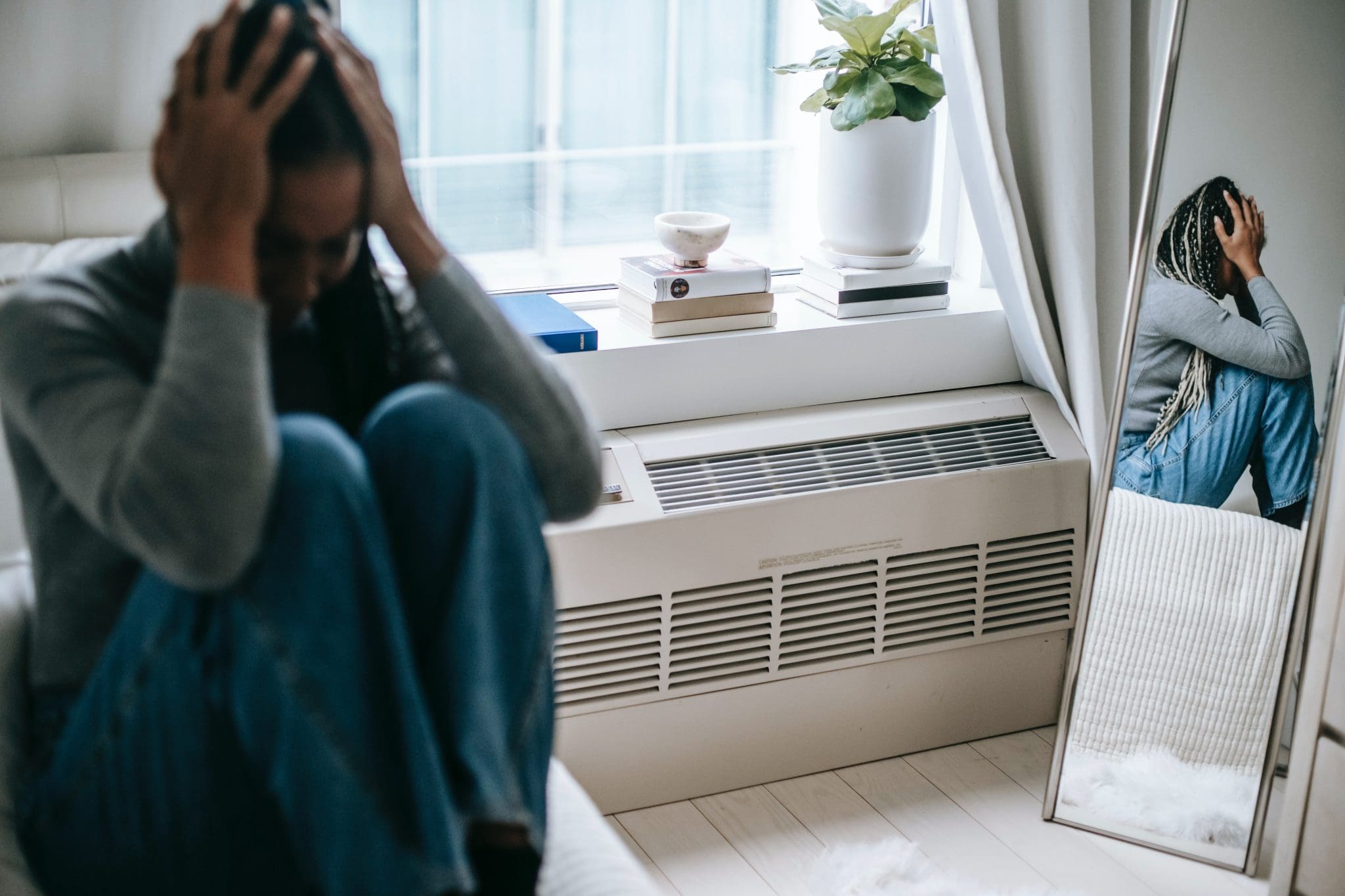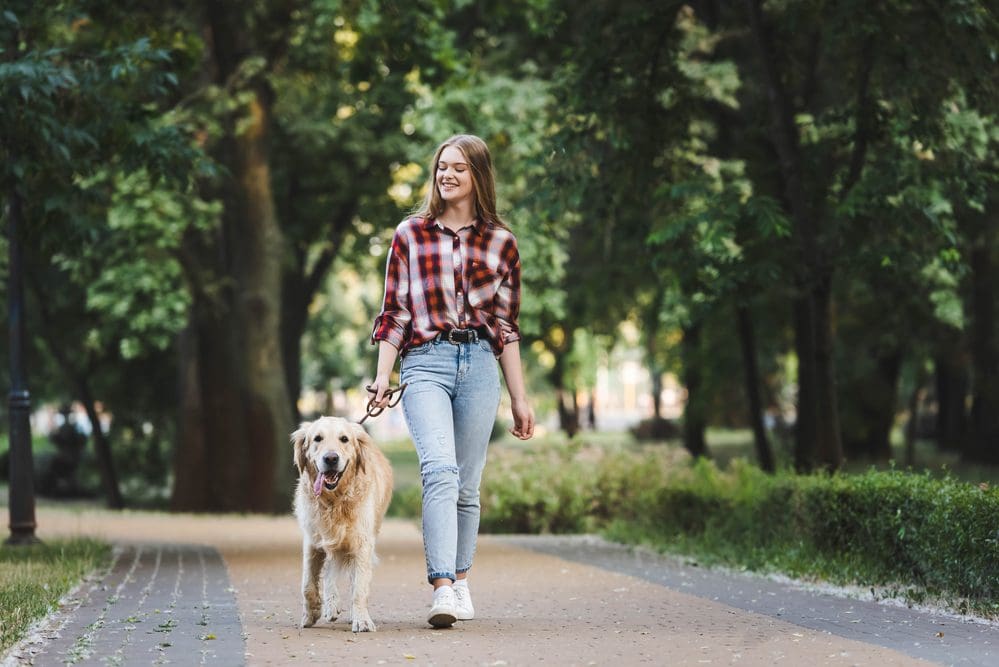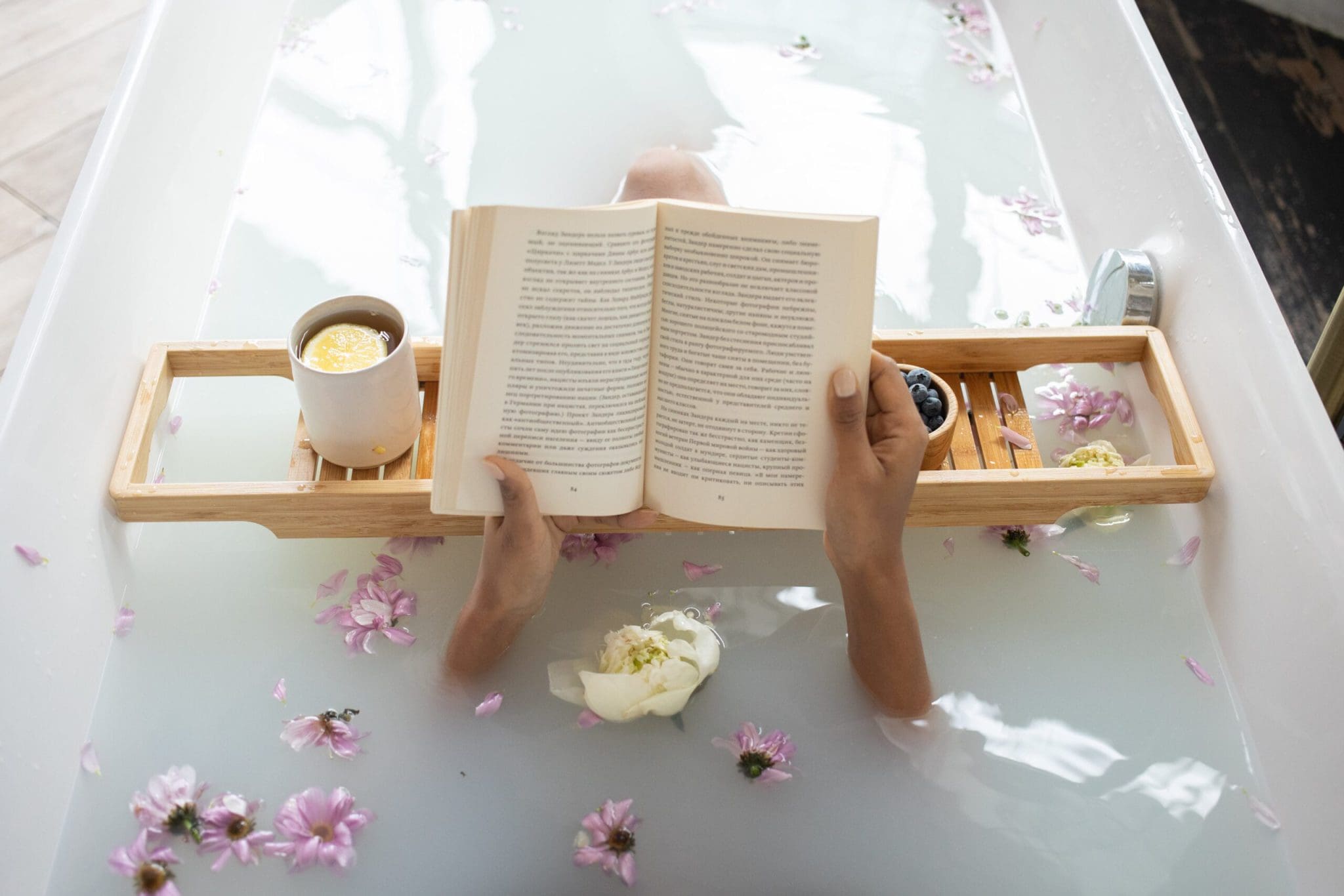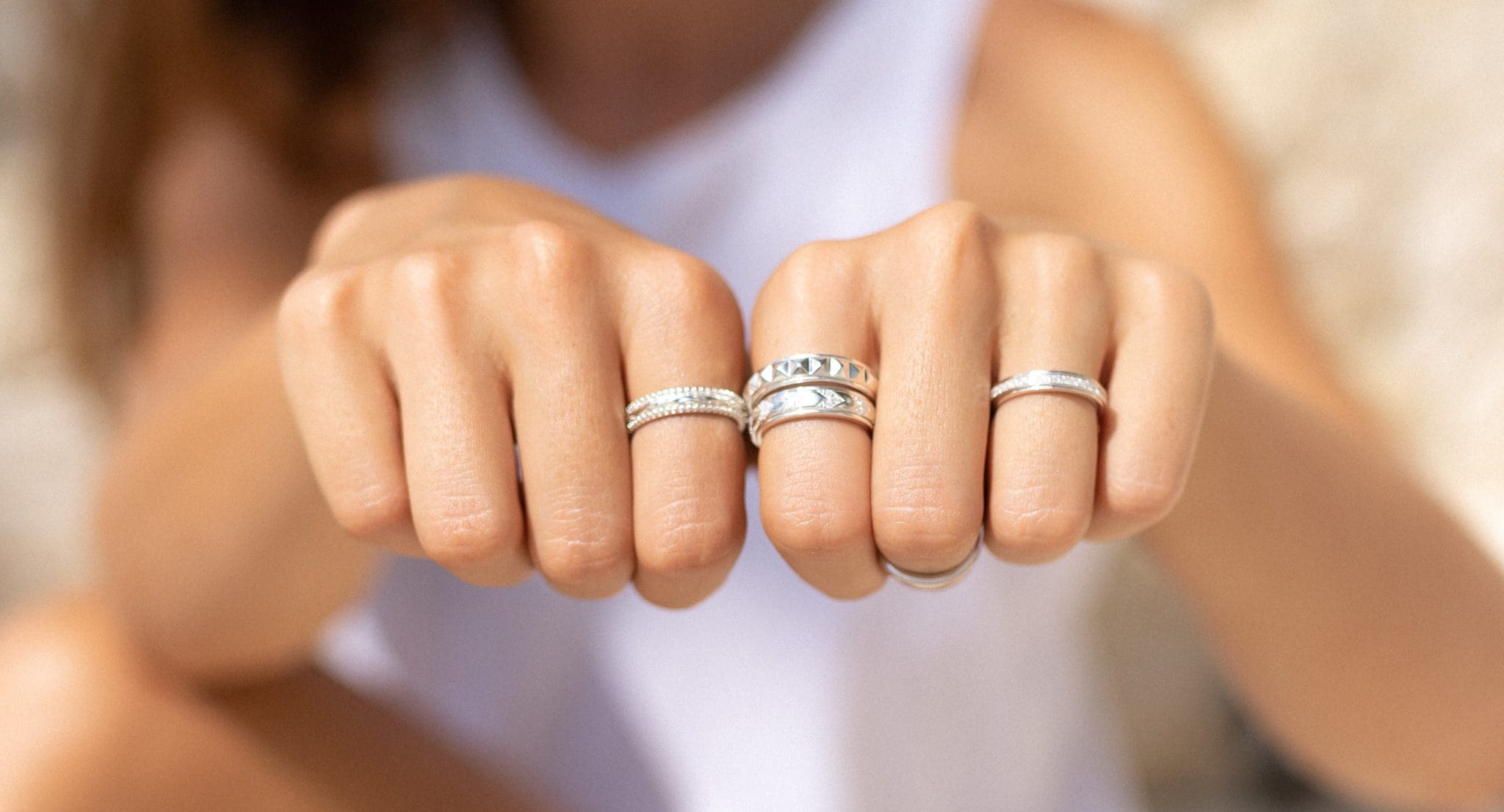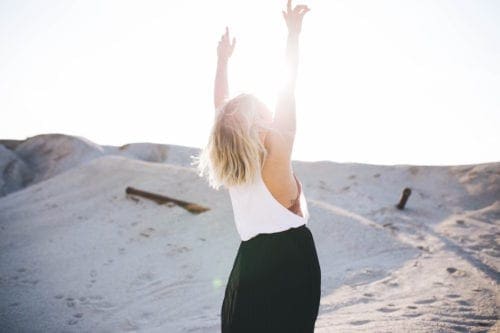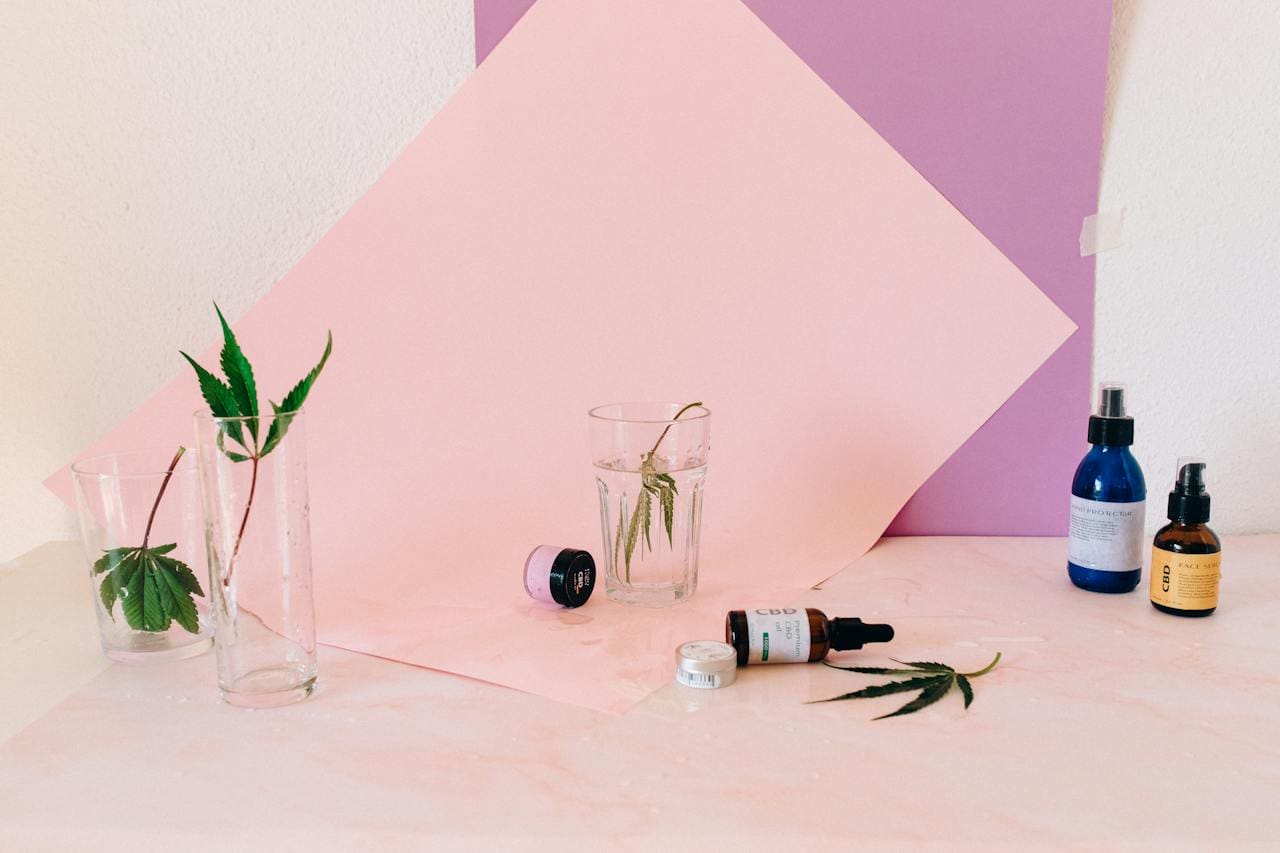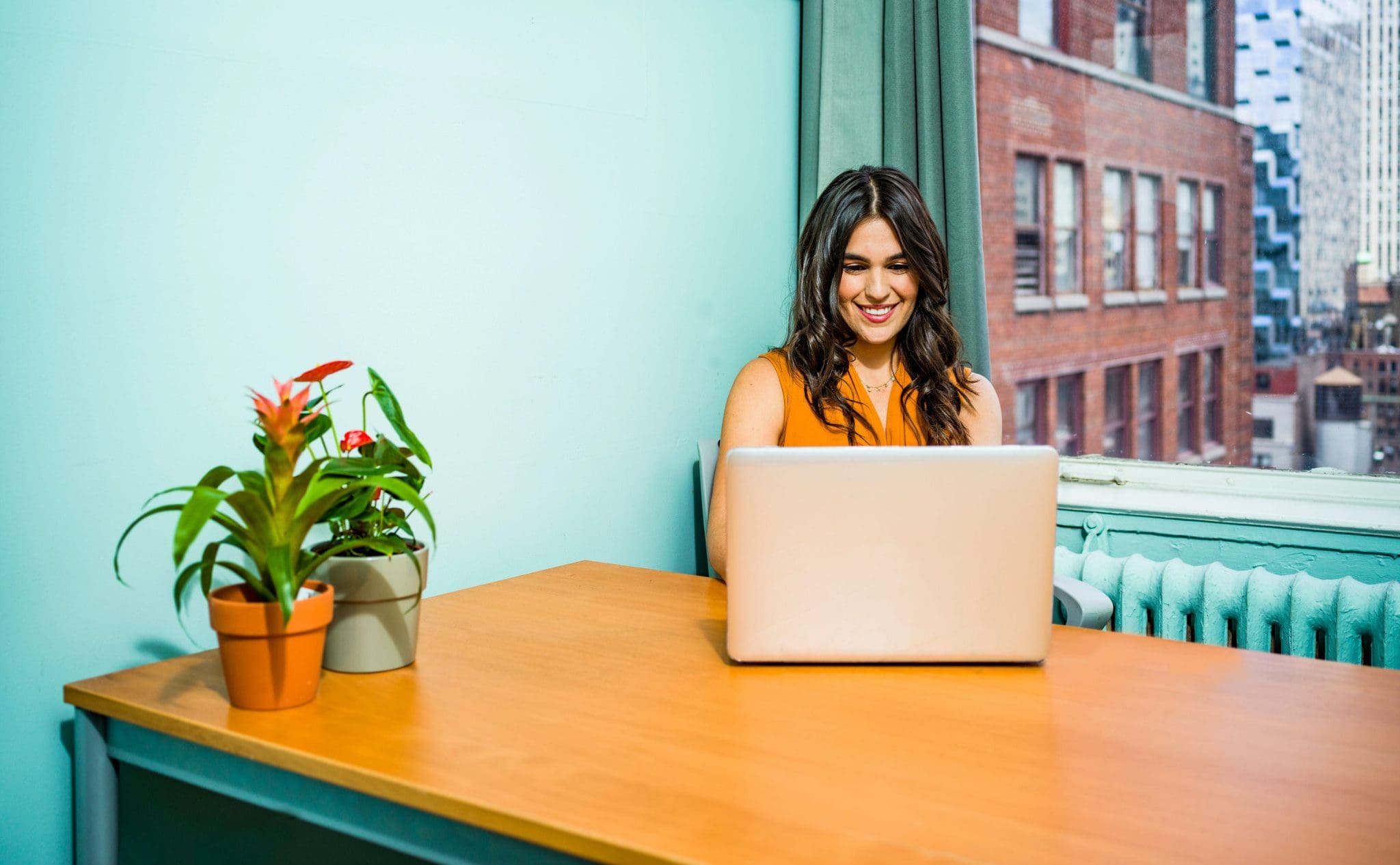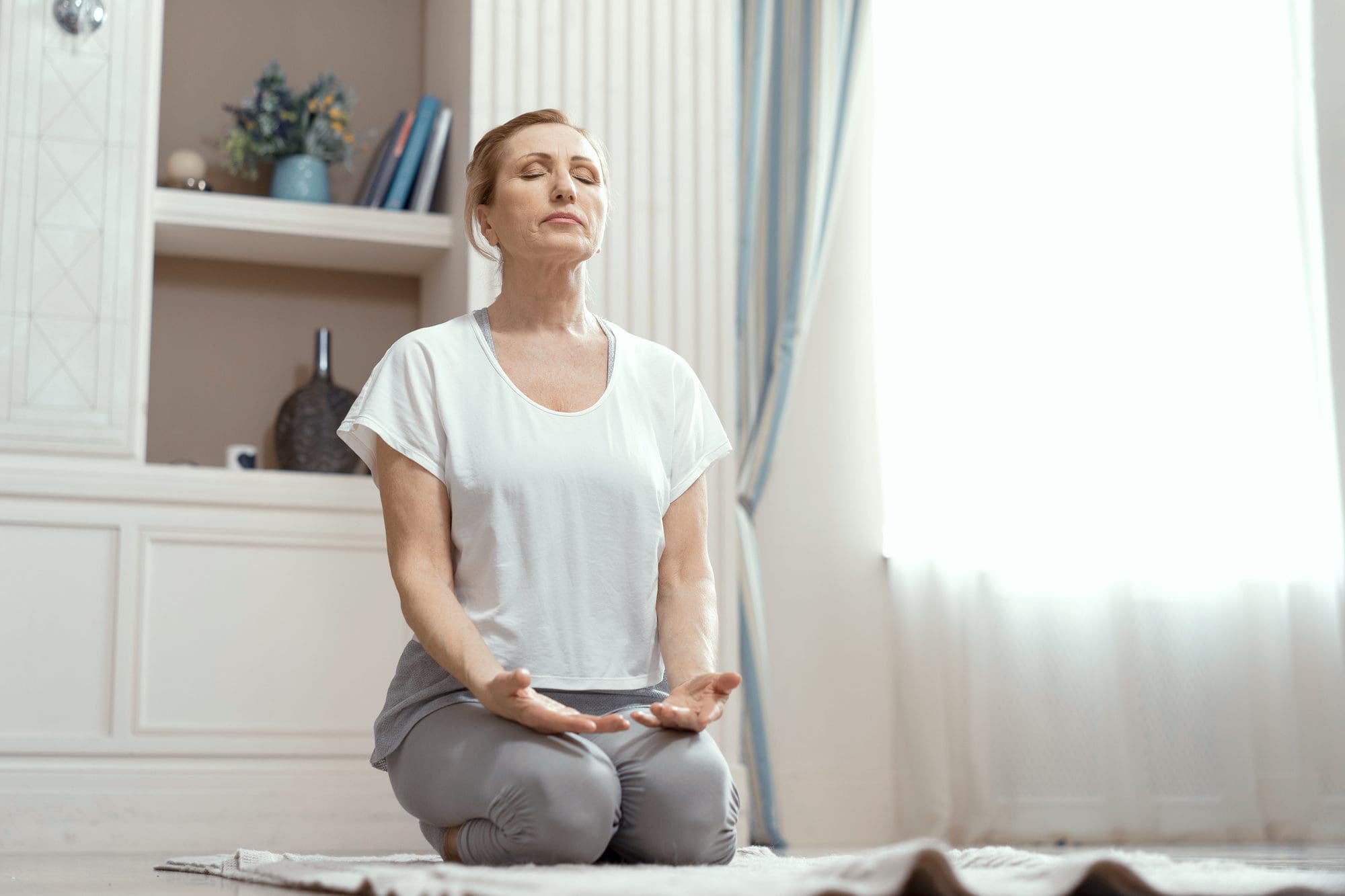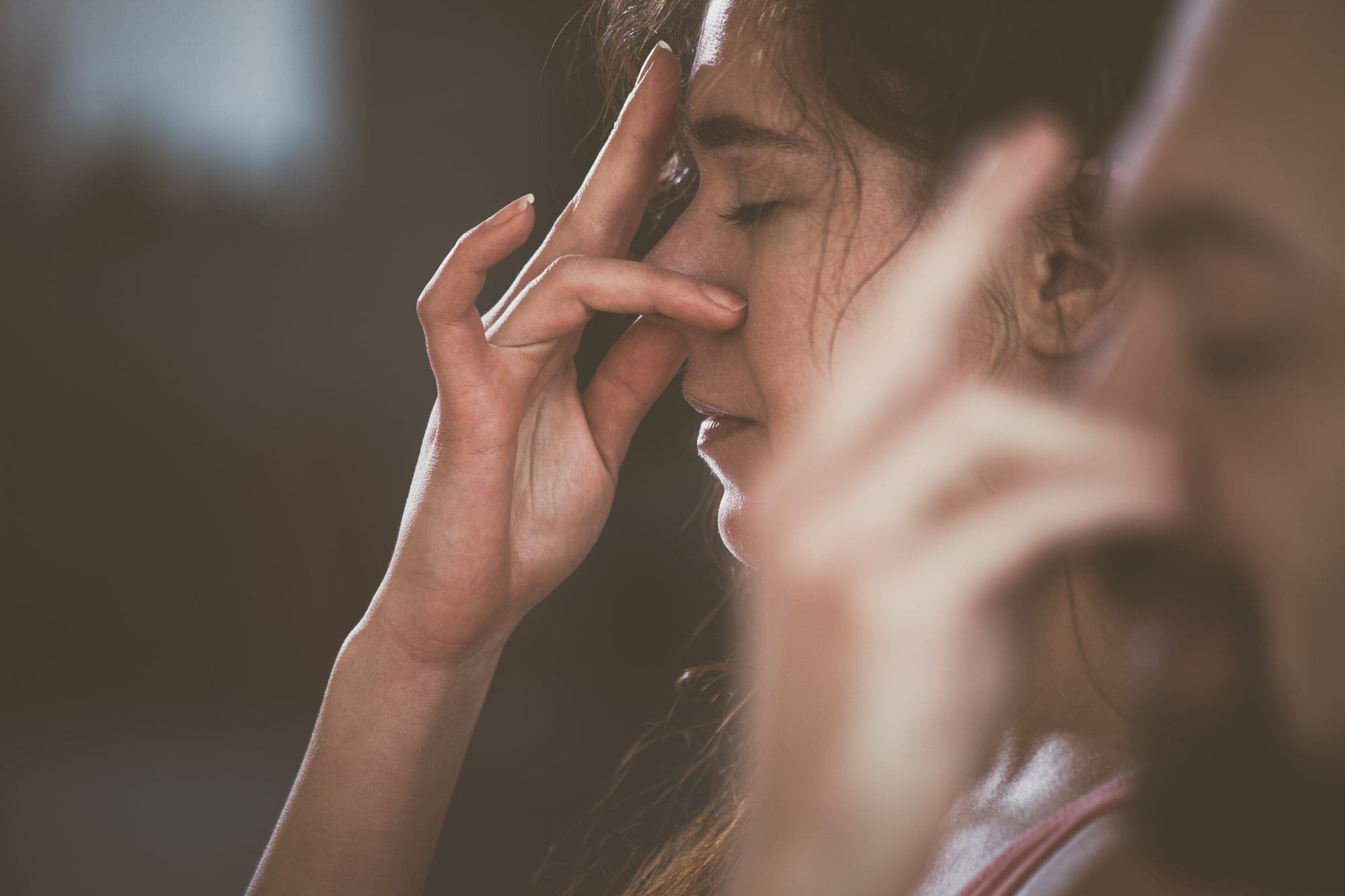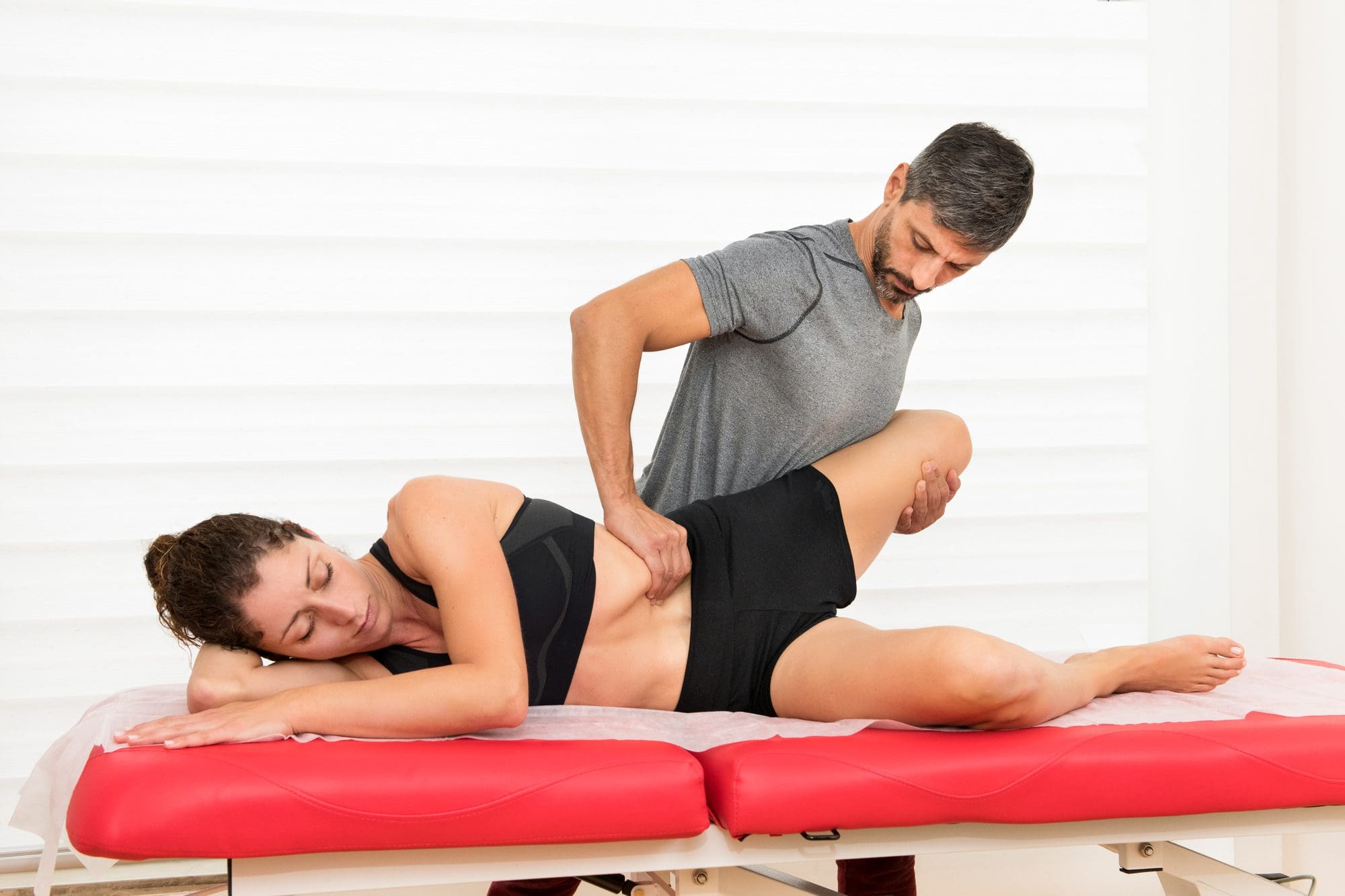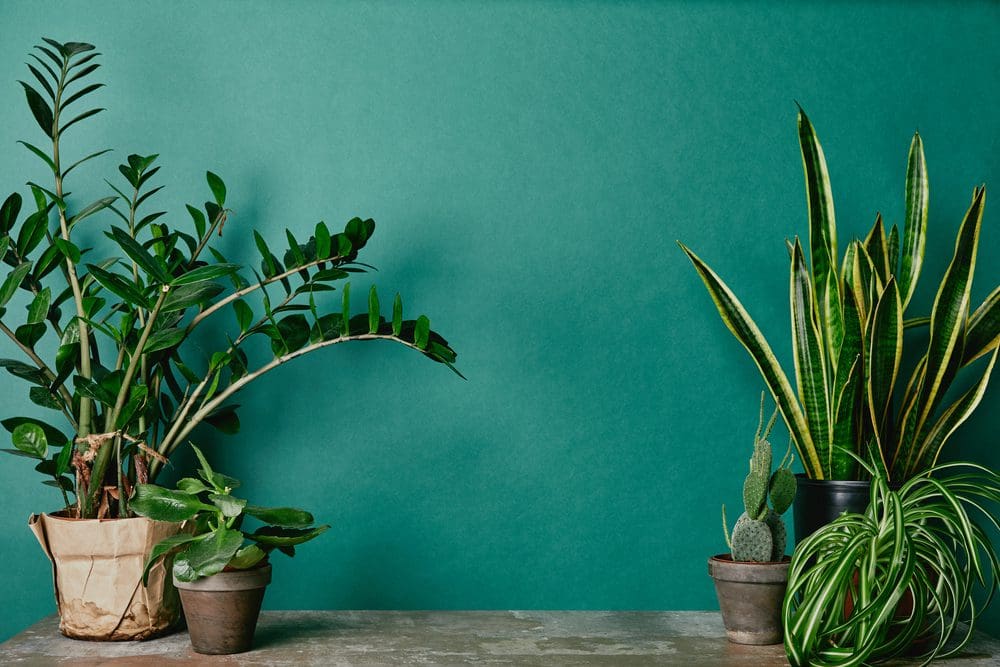Full Disclosure: Clicking on these links could mean a tiny commission for me, at no extra cost to you.
If there’s one thing you can rely on when you’re experiencing anxiety, it’s your breath. Deep breathing has long been hailed as one of the top ways to calm yourself during a panic attack. In fact, several studies have found strong evidence that focusing on your diaphragmatic breathing can trigger body relaxation responses. But what may surprise you is that not all breathing techniques are created equal. Most importantly, there are some breathing techniques that are more effective than others for reducing anxiety. So, let’s get you breathing the right way with these science-backed breathing exercises for anxiety relief.
Below is a collection of carefully selected breathing methods designed to not only soothe your mind but also to strengthen your mental resilience. Each breathing technique is validated by scientific evidence, bringing you one step – or rather, one breath closer to breaking free from the incessant cycle of anxious thoughts. Whether you’re at home, work, or in a public space, these breathing exercises for anxiety will help you calm your nerves anytime you need.
Understanding the Power of Breathing for Anxiety
Anxiety is a natural response to stress. It’s a signal from our body that indicates potential threats, designed to prepare and protect you. However, when anxiety becomes a constant in your life, it can disrupts your balance and affect your health, mood, and overall quality of life. It’s no longer just preparing and protecting you; it’s creating a rush of stress hormones that lead to all kinds of physical and psychological symptoms. It’s here, in the midst of this turmoil, that breathing exercises for anxiety take centerstage.
The Scientific Evidence Behind Breathing Techniques for Anxiety
Research suggests a strong link between the way we breathe and our mental state. A study published in the Journal of Clinical Psychiatry highlights how controlled breathing practices can significantly reduce anxiety symptoms. These exercises influence the autonomic nervous system, dialling down the sympathetic system responsible for the stress response, while enhancing the parasympathetic system, often referred to as the “rest and digest” system.
And that’s only one study. There’s all kinds of clinical reports, studies, research papers and evidence supporting the effects of breathing exercises for anxiety.
How Do Breathing Exercises Work?
Breathing exercises work by directly influencing the physiological and psychological aspects of your body’s stress response. They act as a bridge, connecting the mind and body. This helps you shift towards relaxation and away from stress. The process of focusing on your breath introduces a mindfulness component, grounding you in the present moment, a practice supported by findings in the Journal of Behavioral Medicine. This mindful breathing signals the brain to calm the nervous system, lower blood pressure, and reduce heart rate, fostering a state of inner peace.
Breathe for Relief
Inward Breathwork offers guided breathwork sessions designed to reduce stress and enhance your well-being. Try it now with a 14-day free trial and feel the difference breathwork can make.
Free Trial9 Science-Backed Breathing Exercises for Anxiety
Anxiety relief is not one-size-fits-all, but the versatility of breathing exercises means there’s something for everyone. Below, we go over nine breathing techniques for anxiety, each backed by scientific research, promising to guide you towards a calmer state of being.
1. Diaphragmatic Breathing
Also known as belly breathing, diaphragmatic breathing involves deep breathing through the diaphragm to achieve relaxation. A study in the International Journal of Yoga suggests that practicing diaphragmatic breathing can enhance cognitive performance and reduce stress triggers, making it an effective tool for managing anxiety.
Here are the steps to performing diaphragmatic breathing:
- Inhale Through Your Nose : Slowly breathe in through your nose, aiming to keep the hand on your chest still while the hand on your belly rises.
- Exhale Through Your Mouth: Exhale slowly through your mouth, puckering your lips slightly. Use the hand on your belly to help push air out by gently pressing down.
- Repeat: Continue this pattern of breathing for 5 to 10 minutes, focusing on keeping your breaths slow and deep.
2. 4-7-8 Breathing Technique
Developed by Dr. Andrew Weil, the 4-7-8 technique is a simple yet powerful method that focuses on elongating the breath cycle. Research published in the Journal of Alternative and Complementary Medicine found that regular practice can improve autonomic functions, increase mindfulness, and decrease stress levels.
Here are the steps to performing this breathing exercise for anxiety:
- Exhale Fully: Begin by exhaling completely through your mouth, making a whoosh sound.
- Inhale Through Your Nose: Close your mouth and inhale quietly through your nose to a mental count of 4.
- Hold Your Breath: Hold your breath for a count of 7.
- Exhale Completely: Exhale completely through your mouth, making a whoosh sound to a count of 8.
- Repeat the Cycle: This completes one cycle. Repeat the cycle three more times, for a total of four breaths.
3. Box Breathing
Box breathing, or square breathing, involves inhaling, holding, exhaling, and holding the breath, all in equal counts. This technique is used by athletes and in military training to enhance performance and concentration. Studies suggest it can significantly reduce physiological stress indicators, making it a potent method for anxiety relief.
Here are the steps to performing this breathing exercise for anxiety:
- Exhale Completely: Begin by slowly exhaling all the air out through your mouth, emptying your lungs fully.
- Inhale Through Your Nose: Inhale slowly and deeply through your nose to a slow count of 4, filling your lungs completely.
- Hold Your Breath: Hold your breath for a count of 4, keeping air inside.
- Exhale Through Your Mouth: Exhale slowly through your mouth for another count of 4, expelling the air from your lungs.
- Hold Again: After exhaling, hold your breath again for a count of 4 before inhaling again.
- Repeat the Cycle: Continue this pattern for several minutes—inhale, hold, exhale, hold, each to the count of 4.
4. Alternate Nostril Breathing
A key practice in yoga, alternate nostril breathing is believed to balance the left and right parts of the brain. According to research in the Journal of Ayurveda and Integrative Medicine, it effectively reduces stress levels and improves cardiovascular functions, which are often compromised in anxiety states.
Here are the steps to performing this breathing technique for anxiety:
- Prepare Your Hand: Place your right thumb on your right nostril and your ring finger on your left nostril. Your index and middle fingers can rest on your forehead or be folded down.
- Close Right Nostril: Gently close your right nostril with your thumb and exhale fully through your left nostril.
- Inhale Left: Inhale deeply through your left nostril.
- Switch and Hold: Close your left nostril with your ring finger, release your thumb, and hold the breath for a moment.
- Exhale Right: Exhale slowly through your right nostril.
- Inhale Right: Inhale deeply through your right nostril.
- Switch and Hold Again: Close your right nostril with your thumb, release your ring finger, and hold the breath for a moment.
- Exhale Left: Exhale slowly through your left nostril.
Tap Into Anxiety Relief Right Now
→ Mindfulness Meditation: Gain access to over 2000 guided meditations, stress relief techniques, and personalized plans to help you stay calm and focused. Get Started
→ Breathwork : Receive guided breathwork sessions designed to reduce stress and enhance your well-being. Get Started
5. Progressive Muscle Relaxation with Breathing
This technique combines deep breathing with progressive muscle relaxation, focusing on tensing and relaxing muscle groups. Evidence from the Applied Psychophysiology and Biofeedback journal indicates that this method can significantly lower anxiety levels, particularly when practiced consistently.
Here are the steps to performing this breathing exercise for anxiety:
- Take a Few Deep Breaths: Begin with a few deep breaths, inhaling through your nose and exhaling through your mouth, to prepare your body for relaxation.
- Tense Your Feet: Focus on your feet. Inhale and tense the muscles in your feet as tightly as you can for about 5 seconds.
- Relax and Breathe Out: Exhale and release all the tension in your feet. Notice the sensation of relaxation.
- Move Up to Your Legs: Repeat the process with your legs. Inhale and tense your leg muscles for 5 seconds, then exhale and release.
- Continue Through Each Muscle Group: Move progressively through each muscle group in your body: calves, thighs, buttocks, stomach, chest, back, arms, shoulders, neck, and face. Tense each muscle group as you breathe in, hold for 5 seconds, and then release as you breathe out.
- Take Your Time: Spend time on each muscle group, and don’t rush. Notice the contrast between tension and relaxation.
- Finish with Deep Breathing: Once you’ve worked through all the muscle groups, finish with a few deep breaths. Inhale through your nose and exhale through your mouth, feeling your body relaxed and calm.
6. Equal Breathing
Equal breathing involves matching the length of your inhales and exhales, typically around 4 to 6 seconds each. This technique, studied for its efficacy in balancing emotional states, can lead to improved focus and reduced stress, according to findings in the Frontiers in Human Neuroscience journal.
Here are the steps to performing this breathing exercise for anxiety:
- Focus on Your Natural Breath: Begin by observing your natural breath for a few moments to center yourself and prepare for the exercise.
- Inhale Through Your Nose: Inhale slowly and deeply through your nose for a count of 4, filling your lungs with air.
- Hold for a Moment: Hold your breath for a moment at the top of the inhalation if it’s comfortable for you.
- Exhale Through Your Nose: Exhale slowly through your nose for the same count of 4, releasing all the air from your lungs.
- Repeat the Cycle: Continue this pattern of inhaling and exhaling for equal counts. Aim for 4 to 6 seconds per inhale and exhale, but adjust the timing as needed to suit your comfort level.
- Maintain Focus: Keep your focus on the count and the sensation of the breath moving in and out of your body. This helps in maintaining a rhythm and promotes relaxation.
- Practice Regularly: Practice for 5 to 10 minutes initially, gradually increasing the duration as you become more comfortable with the technique.
7. Resonant or Coherent Breathing
Resonant breathing, which aims for about five breaths per minute, is designed to synchronize with the heart’s natural rhythms. Research in the Global Advances in Health and Medicine journal found that this practice enhances heart rate variability, a marker of reduced stress and increased resilience.
Here are the steps to performing this breathing exercise for anxiety:
- Start with a Few Deep Breaths: Take a few deep breaths to relax and prepare your body and mind for the exercise.
- Inhale Slowly: Inhale slowly and deeply through your nose, counting to 5. Try to breathe in a way that fills your lungs fully without straining.
- Exhale Smoothly: Exhale slowly and fully through your nose or mouth, also counting to 5. The goal is to match the length of your exhales to your inhales, creating a rhythmic pattern.
- Continue the Pattern: Keep this breathing pattern going — inhaling for 5 seconds and exhaling for 5 seconds. This rhythm, close to the rate of 6 breaths per minute, is considered optimal for inducing a state of coherence between the heart and brain.
- Maintain Focus: Stay focused on the rhythm of your breath, allowing your mind to clear and your body to relax deeply with each cycle of breaths.
- Practice Duration: Aim to continue this coherent breathing pattern for about 5 to 10 minutes. As you become more accustomed to the practice, you may gradually increase your practice time.
- Conclude Gently: After completing your practice, allow your breathing to return to its natural rhythm and take a moment to notice the calmness in your mind and body before gently opening your eyes and moving on with your day.
8. Bhramari Pranayama (Bee Breathing)
Bhramari Pranayama involves making a humming sound while exhaling, which is said to have a calming effect on the mind. Studies published in the International Journal of Yoga highlight its ability to decrease stress and improve the nervous system’s balance.
Here are the steps to performing this breathing method for anxiety:
- Prepare Your Hands: Raise your arms to the sides, bend your elbows, and bring your index or middle fingers to your ears. You can also use your thumbs to gently close your ear flaps if that’s comfortable.
- Take a Deep Breath In: Inhale deeply and slowly through your nose, filling your lungs with air.
- Exhale with a Humming Sound: While exhaling, make a long, steady humming sound like that of a bee. Keep your mouth closed and feel the vibration of the sound in your head.
- Maintain Gentle Pressure on Your Ears: If using your thumbs to close your ears, maintain gentle pressure to keep external sounds out and enhance the internal vibration.
- Repeat the Cycle: Continue for 4-5 cycles, or more if comfortable, focusing on the soothing sound and vibration with each exhalation.
- Conclude and Reflect: After completing the practice, keep your eyes closed for a few moments, taking note of any changes in your mental state or any sensations in your body.
9. Mindful Breathing
Mindful breathing encourages your full attention to the breathing process, creating a sense of presence and calm. Research in Mindfulness and other journals has shown that mindfulness-based interventions, including mindful breathing, can significantly reduce symptoms of anxiety and depression.
Here are the steps to performing this breathing method for anxiety:
- Observe Your Natural Breath: Begin by simply noticing your breath without trying to change it. Feel the air entering through your nostrils, filling your lungs, and then leaving your body on the exhale.
- Focus on the Sensations: Pay attention to the physical sensations of breathing. Notice the rise and fall of your chest or belly, the coolness of the air as you inhale, and its warmth as you exhale.
- Acknowledge Wandering Thoughts: It’s normal for your mind to wander. When you notice your thoughts drifting, gently acknowledge them and then bring your focus back to your breath.
- Deepen Your Awareness: As you become more absorbed in the act of breathing, try to explore the subtleties of the process. Feel the slight pause between each inhale and exhale.
- Continue With Intent: Maintain this focused awareness on your breath for several minutes. With each breath, allow yourself to become more relaxed and centered.
- Gently Conclude Your Practice: When you’re ready to finish, slowly expand your awareness beyond your breath to include your entire body and then the room around you. Open your eyes gently, taking a moment to notice how you feel.
Adding Breathing Exercises into Your Routine
Incorporating breathing exercises into your self care routine doesn’t require a whole lot of time or changes to your schedule. It just takes a bit of commitment. Once you start experiencing the powerful benefits breathwork offers, you’ll never want to skip this practice again.
Now, if all of these steps and different breathing techniques seem overwhelming, there’s another option. Inward Breathwork is an online platform that provides guided breathwork classes on-demand. You can follow the classes right from home and start reducing stress, boosting your mood and so much more straight away.
As a thank you for being a part of our mental health community, you can receive an entire month of breathwork classes for free.
Conclusion
Breathing exercises for anxiety are easy, accessible tools that can bring you calmness anytime, anywhere. From the calming rhythms of diaphragmatic breathing to the focused tranquility of mindful breathing, these techniques offer a powerful means to regain control over your mental health and overall wellbeing. Breathwork is such a powerful practice for easing anxiety, so it’s recommended to start using it to your advantage today. Choose one or two techniques that resonate with you, and start practicing. And remember, if you need some help, you have that free month of on-demand breathwork classes at Inward Breathwork.
Additional Resources
At Anxiety Gone, we believe in healing together. We’ve partnered with trusted wellness organizations to bring you the most effective tools, insights, and support. Some links may earn us a commission — always at no extra cost to you.
Join The Club
Connect with our private self-care community for daily support, exclusive tips, and inspiration. Join us today
Talk Therapy
Get matched with licensed therapists online through BetterHelp and begin your healing today. Start now
Hims/Hers
Receive personalized, affordable mental health care + medication from home — no insurance required. Learn more
Mental Health, Right to your Inbox
Subscribe to our newsletter for a place to rest your mental health and find ways to support your journey. Sign up
Emotional Freedom Technique
Tap your way to calm with scientifically backed stress relief. Our readers receive a 14-day free trial! Try EFT now
Mindfulness App
Access 2,000+ guided practices to support your mental health wherever you are + exclusive discount when you upgrade Try it
Online Breathwork
Experience calm and reset your nervous system with guided sessions and receive your first month free . Get started
Find a Helpline
If you need immediate support, visit our directory to find help near you. See helplines



